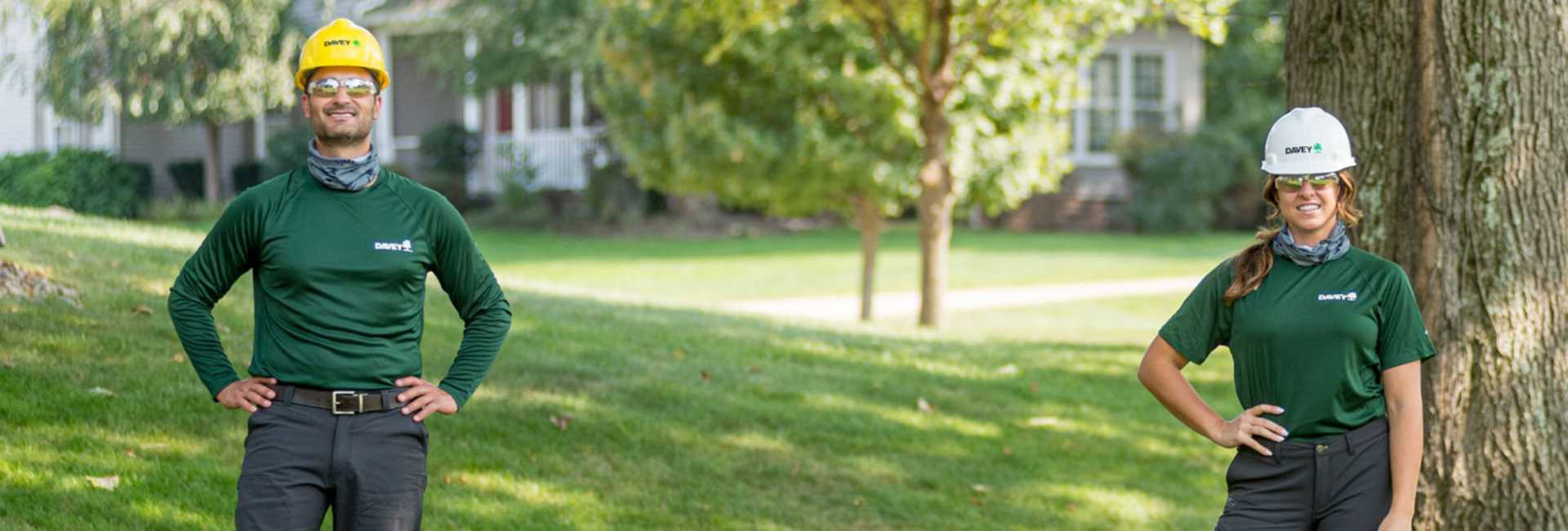Watching a tree grow is magical. Day by day, it slowly grows (without catching our attention). Then, we turn around, and the former sapling is a full-grown, 80’ tree with a sprawling canopy.
But what if your tree is getting a bit too tall for your liking? Perhaps those lengthy branches are headed toward a power line or fresh fruits are out of reach on a cherry tree.
Whatever the case, tending to a tree that you want to keep small takes some planning and patience.
Is it possible to stop a tree from growing taller?
Pruning to reduce tree height is possible, but it’s always going to be an uphill battle (literally).
The absolute best way to handle this issue is to avoid it altogether by planting the right tree in the right place. Look at a tree’s height at maturity and make sure you have space for it before planting.
Can you keep big trees small by pruning it to keep it short?
Proper pruning is the healthiest way to maintain an ideal tree height and keep your tree’s structure sound. It’s best to start this process when your tree is younger or newly planted. Though, trees that grow in a pyramid shape cannot be pruned this way.
If that’s not the case, don’t worry if your tree is well past its youth. Mature trees, too, can be trimmed down to an ideal height over a few years. But keep in mind that as trees age, they have less energy to recover from a significant pruning, so doing so could have negative consequences.
Whatever you do, don’t consider chopping the top of your tree to keep it small. The limbs will grow back before long, but this time ‘round, they’ll be weaker.
Also, discuss if you want to reduce the height of your tree, which will recover regular maintenance, or remove and replace it with a smaller tree.
Can you prune an oak or cherry tree to keep it small?
Yup! You can keep oak and cherry trees small, too. Your arborist will help develop a plan to ensure you’re training your tree and reducing its height in the best way possible.
They’ll also pinpoint the best time to prune because cherry and oak trees are on opposite pruning schedules. While arborists prune fruit trees in late spring or early summer, you want to avoid pruning oaks between April and August to prevent spreading oak wilt.
How can you limit tree height or stop a tree from growing taller?
Again, you can’t stop a tree from growing taller, but you can limit tree height (if you do it the right way).
As a general guideline, you rarely want to remove more than one fourth of the tree’s living canopy at once because then your tree may not have enough energy to create the food it needs. That could lead to a struggling tree or one that simply does not make it.
That’s why you want to work with your arborist to reduce your tree’s height gradually over a 3-year period. So, if you want to make your tree 6 feet shorter, your arborist would prune off 2 feet each year.
Using a specialty pruning method, called drop crotch pruning, your arborist will help ensure your big tree works in a small space. To nail this method and crown reductions, you really need to understand the intricacies of tree structures. Remove too much at once, and you risk losing your tree. Plus, if you must use a ladder (and a pruning tool) to remove those high tree limbs, that tree is too big for you to prune safely.
If you want to limit tree height, you should opt for an arborist to handle this because expertise is a necessity!





